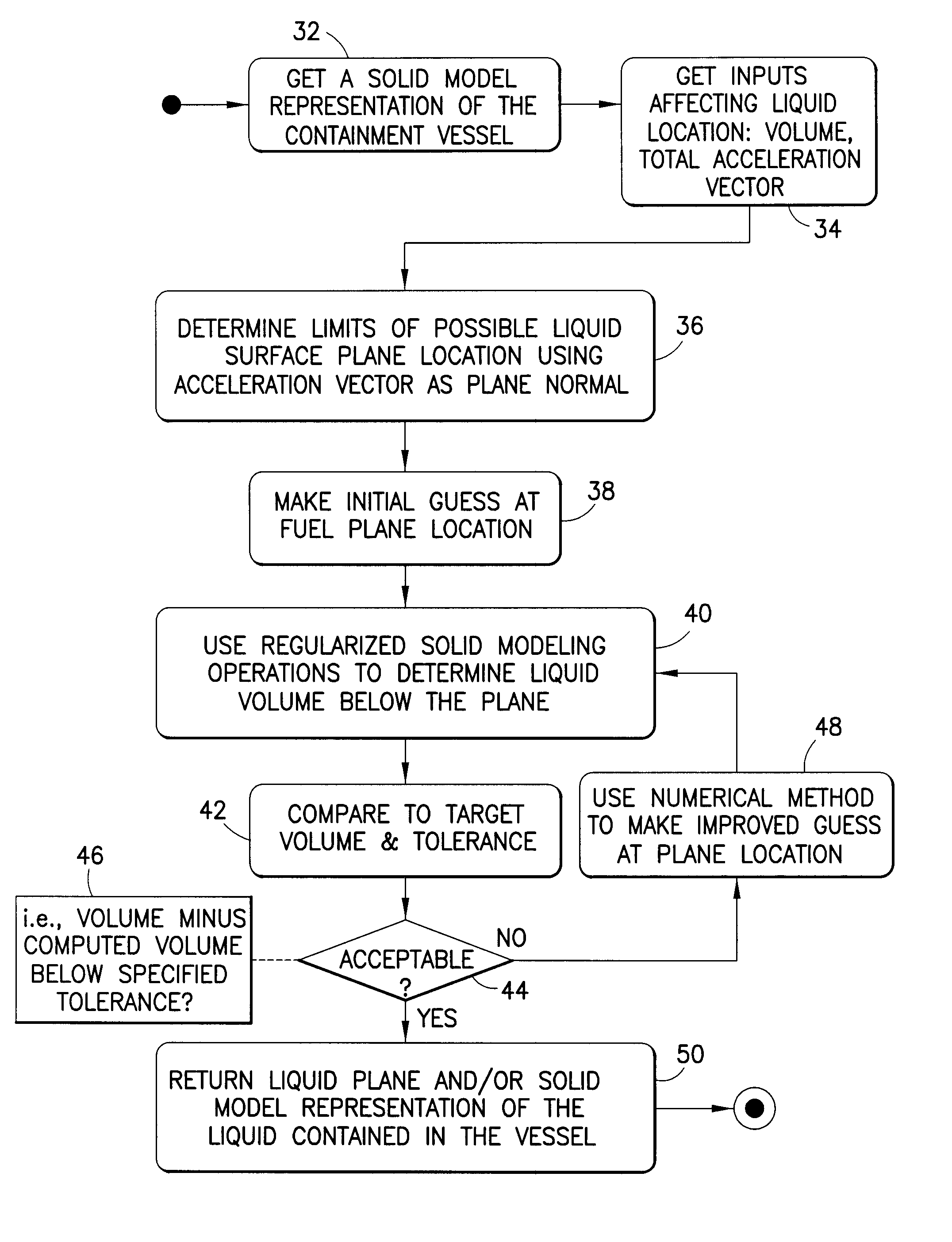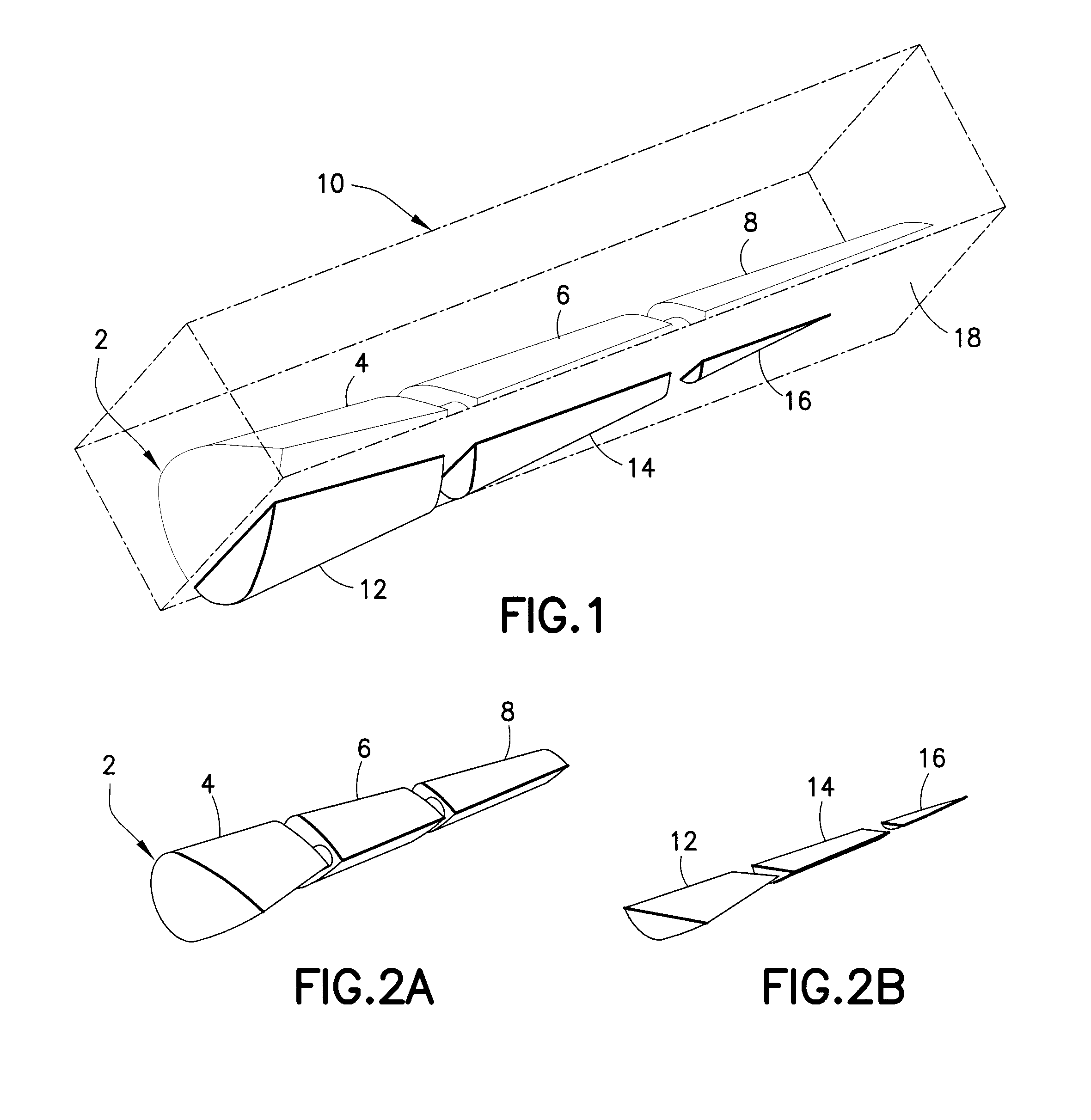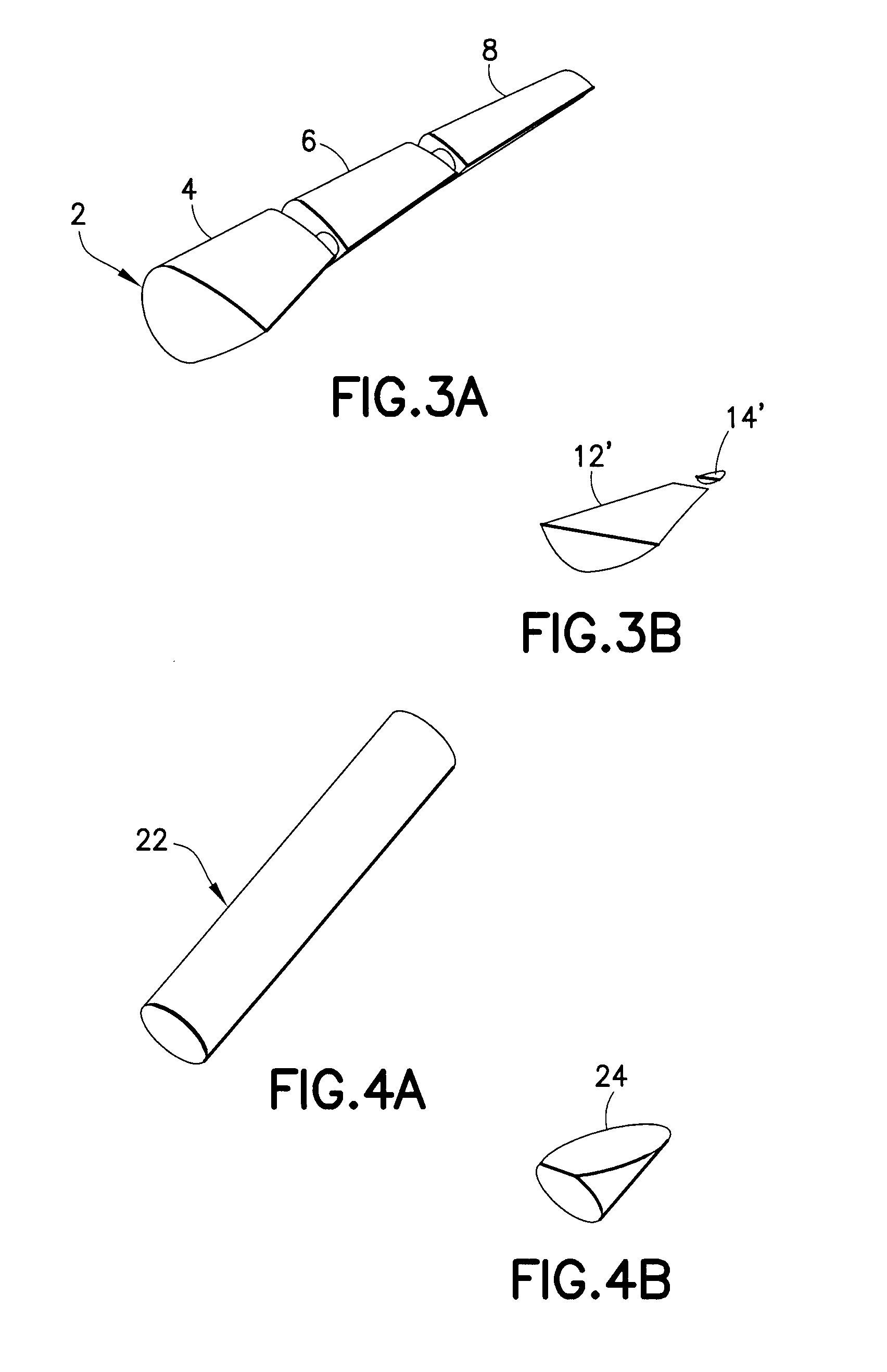Calculating Liquid Levels in Arbitrarily Shaped Containment Vessels Using Solid Modeling
a technology of liquid level and arbitrarily shaped containment vessels, applied in cad techniques, instruments, machines/engines, etc., can solve problems such as inability to provide accurate solutions, complex, and difficult to maintain and enhance, and achieve the effect of eliminating data conversion problems
- Summary
- Abstract
- Description
- Claims
- Application Information
AI Technical Summary
Benefits of technology
Problems solved by technology
Method used
Image
Examples
Embodiment Construction
[0034]Various embodiments of a system for modeling and simulating the behavior of liquid inside a fuel tank under dynamic conditions will now be described.
[0035]FIG. 1 is a solid model representation of a wing 2 comprising compartments 4, 6 and 8 for storing fuel. In accordance with one embodiment of the invention, the solid model representation of wing 2 is intersected by a face 18 of an infinite horizontal half-space 10, which face 18 represents the level of fuel (i.e., the level of the surface plane of the fuel) inside the wing 2 given a 15% volume fill. An angled viewpoint was chosen for clarity.
[0036]As shown in FIG. 2A, compartment 4 of wing 2 is in fluid communication with compartment 6 via an orifice, and compartment 6 is in fluid communication with compartment 8 via an orifice. FIG. 2A shows wing 2 with a 0° bank angle. In contrast, FIG. 2B is a solid model representation of the volumes of fuel inside the wing 2 at a 0° bank angle for a 15% volume fill. As seen in FIG. 2B, ...
PUM
 Login to View More
Login to View More Abstract
Description
Claims
Application Information
 Login to View More
Login to View More - R&D
- Intellectual Property
- Life Sciences
- Materials
- Tech Scout
- Unparalleled Data Quality
- Higher Quality Content
- 60% Fewer Hallucinations
Browse by: Latest US Patents, China's latest patents, Technical Efficacy Thesaurus, Application Domain, Technology Topic, Popular Technical Reports.
© 2025 PatSnap. All rights reserved.Legal|Privacy policy|Modern Slavery Act Transparency Statement|Sitemap|About US| Contact US: help@patsnap.com



